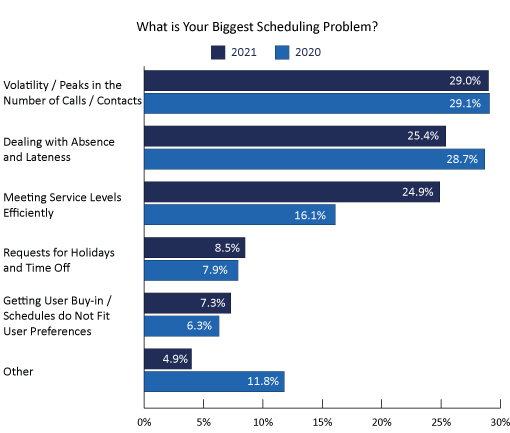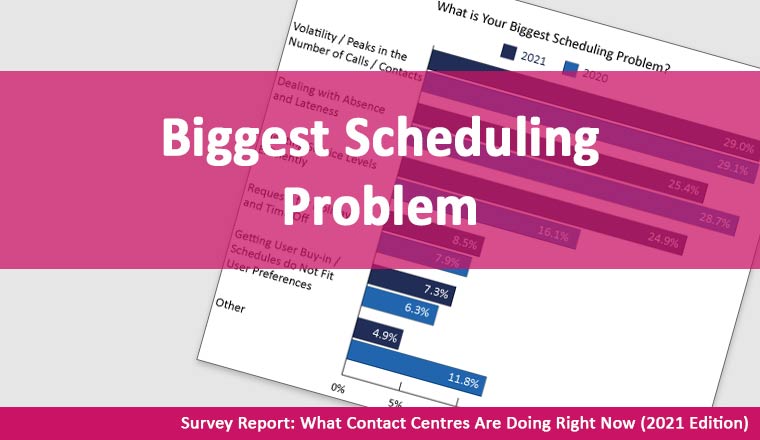We asked 224 contact centre professionals ‘What Is Your Biggest Scheduling Problem?’. This article explains the scheduling difficulties contact centres are facing.
The results have been taken from the Workforce Management chapter of our ‘What Contact Centres Are Doing Right Now’ 2021 survey report, which was sponsored by NICE.
What Is Your Biggest Scheduling Problem?
Contact centre biggest scheduling problem – results:
| Scheduling Problem | Percentage |
|---|---|
| Volatility / Peaks in the Number of Calls / Contacts | 29.0% |
| Dealing with Absence and Lateness | 25.4% |
| Meeting Service Levels Efficiently | 24.9% |
| Requests for Holidays and Time Off | 8.5% |
| Getting User Buy-In / Schedules Do Not Fit User Preferences | 7.3% |
| Other | 4.9% |
Forecast Volatility Is Causing Scheduling Havoc
For a second consecutive year, forecast volatility was the biggest problem that resource planners faced when trying to design schedules.

Again, around 29% of participants picked unexpected changes to contact volumes as their greatest scheduling challenge, highlighting the importance of improving forecast accuracy.
The second greatest issue highlighted was also the same as in 2020. But, with only 25.4% of professionals now pointing towards this problem, it seems that contact centres are getting better at dealing with absence and lateness.
Meeting Service Levels Is Becoming Increasingly Difficult
The struggle to meet service level targets has increased within the past year, as now 24.9% of contact centres consider it to be their biggest scheduling problem.
Compare this figure to the 16.1% recorded last year and that’s a growth of 54.7%.
Perhaps this is a knock-on effect of forecast volatility, maybe it reflects attrition and recruitment problems or schedule adherence could be faltering. There are many possible reasons, yet this is – no doubt – a significant cause for concern.
This survey was done in partnership with Akixi, NICE, Nuance, Odigo, Poly and ProcedureFlow.


















